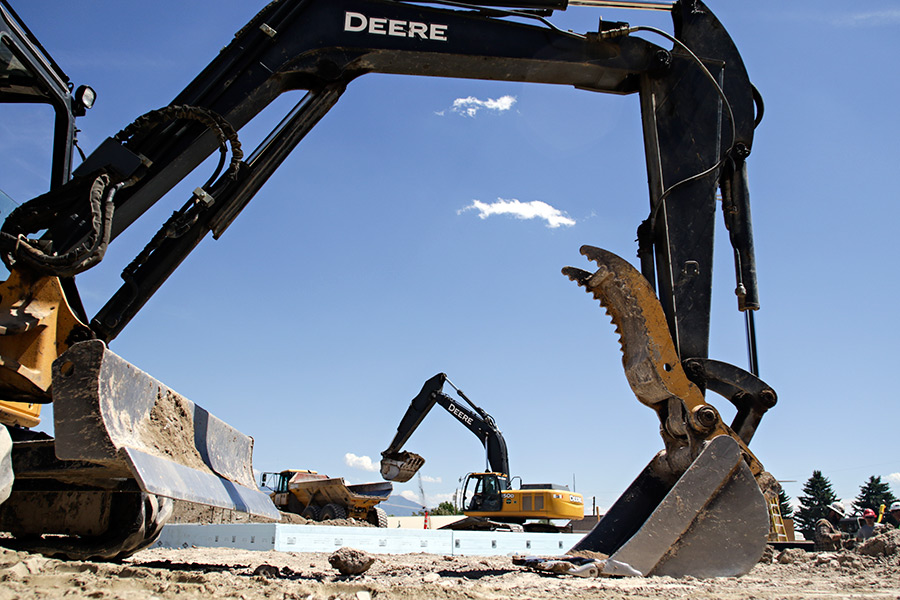“There is economic growth in the Flathead. Boy, is there ever.”
Patrick Barkey, director of the Bureau of Business and Economic Research at the University of Montana, made that statement last week at a Montana Chamber of Commerce event in Kalispell, touting the Flathead Valley as a state economic leader despite a drop in Canadian spending and declines in the timber industry.
The bulk of economic growth in Montana has shifted to the western portion of the state, and the Flathead appears to be benefiting from progress in a wide range of industries, including construction, retail, health care and tourism (hotels and restaurants).
“All of these saw increases and good growth,” Barkey said. “The Flathead is now growing significantly faster than the state average.”
Canadian spending appears to have dipped due to the strong U.S. dollar in contrast to the loonie. Currently, the loonie is worth roughly 77 cents U.S., meaning a Canadian visitor would have to spend $131 in Canadian currency for $100 in the U.S.
Barkey noted that the wood products industry in Northwest Montana is “definitely a cause for concern.” Lumber prices are high but exports to China are down, and the number of new home starts in the U.S. has been lower than analysts expected. Also, the U.S. dollar has gained against most currencies, which has led to an influx of wood products shipped into the country. The expiration of the Softwood Lumber Agreement with Canada has also led to concerns that Canadian producers are flooding the U.S. market.
Locally, the Weyerhaeuser-Plum Creek merger has drastically changed the wood products industry, leading to mill closures and an anticipated 200 job losses this year.
Nevertheless, Barkey remains optimistic that the Flathead will remain an economic leader.
“I’m not betting against Flathead County despite the fact that there are challenges in wood products,” he said. “There is a good growth forecast.”
One issue plaguing Flathead County and other parts of Montana is a shortage of workers, which Barkey said is stalling growth in many industries, with construction and health care especially feeling the pinch. Currently, Kalispell Regional Healthcare has over 180 open positions, ranging from registered nurses, pharmacists and lab techs to a variety of specialists, as well as part-time jobs at The Summit Medical Fitness Center.
Flathead Job Service has reported over 900 open positions, the most ever, ranging from temporary part-time jobs to full-time skilled professions. Statewide fewer people are filing for unemployment insurance.
Barkey said this issue is very real, but it can be solved in a number of ways, including wage adjustments, technology and migration.
Flathead County experienced a 9.3 percent wage growth in 2015, the second highest in Montana behind only Gallatin. Also, the Flathead Valley has resumed its role as one of the state’s leading destinations for new residents.
“The in-migration trend has resumed and that is key to growth,” Barkey said.
Montana, in general, is gaining new residents at a higher rate. From 2010 to 2014, there were 20,502 more people who moved into the state than moved out, according to BBER research. Montana’s net migration rate ranked 13th in the nation during that period.
These added residents will be key to filling open positions as well as replacing retirees, who are a becoming a large segment of the state’s demographics. This aging population will lead to an estimated $2.3 billion in additional health care spending in Montana by 2030, a 31 percent growth, according to BBER.
The increase in insured residents through the Affordable Care Act has also spurred greater health care spending. An additional 15,000 health care workers in a variety of positions will be needed in the coming years in Montana, according to BBER.
The coal industry is suffering a significant downturn, Barkey said, with production in Montana down 29 percent this year through May. Wyoming, the nation’s leading in coal production, is down 28 percent.
“It’s been a terrible year for coal,” Barkey said.
Barkey said the commodity boom has ended but prices have begun to recover. Barley, beef and wheat prices are at a five-year low.
Survey: Wages, Meaningful Work Among Priorities for Job Seekers
A majority of job seekers consider wages and meaningful work to be priorities in the hunt for employment, according to a new statewide survey.
LC Staffing, the state’s largest talent acquisition agency, recently conducted a survey looking into priorities for those seeking employment.
Eight-five percent of respondents listed “wage” as one of the three main considerations when considering an open position. Along with wages, “meaningful work” was listed in the top three priorities by 50 percent of respondents, followed closely by “an organization or supervisor who invests in me with work-related training,” which scored at 48.6 percent.
Yet only 43 percent said wages were the most important factor when considering a job. Responses indicated that other priorities, such as “a position that is interesting or challenging,” “appreciation for what I do,” “a good work environment,” and “flexible schedule” were pivotal components of the search.
“In recruitment, a competitive wage will always be a key factor. Our recent data shows that most Flathead Valley employers who are filling jobs are starting new hires around $12 per hour or more,” stated Kristen Heck, president of LC Staffing. “That said, this survey also clearly shows that many Montana job seekers recognize huge value in employer offerings that cannot be quantified with a dollar sign,”
“This survey reinforces what our LC Staffing team has heard in general conversations with job seekers. Both locally and statewide, people want their work to be meaningful. In this job market, paying a competitive wage is important, but it’s not enough. Being an employer of choice starts with identifying how your organization is making a difference and communicating to employees how they can be a part of that mission.”
Of the 400 residents surveyed, 70 responded to the online form and 66 percent lived in the Flathead Valley, according to LC Staffing.
